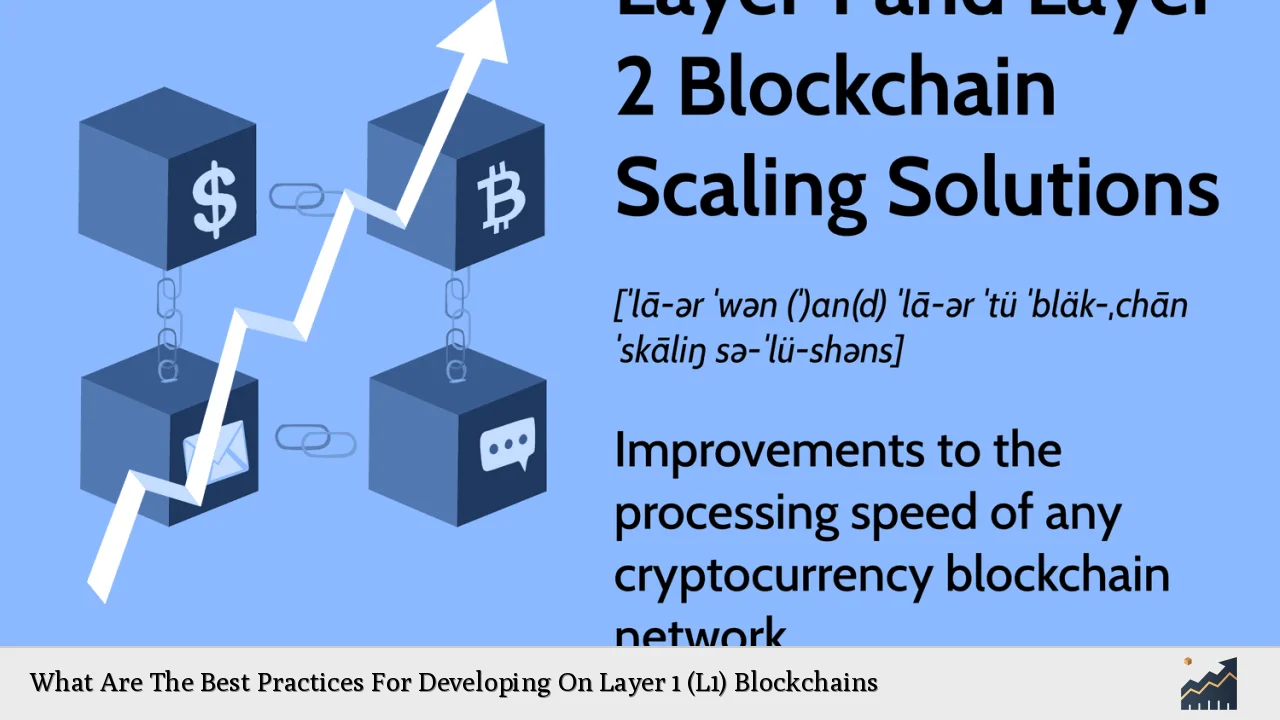Layer 1 (L1) blockchains serve as the foundational infrastructure of blockchain ecosystems, handling core functionalities such as transaction validation, block generation, and consensus mechanisms. These protocols are critical for enabling decentralized applications (dApps), cryptocurrencies, and smart contracts. Developing on L1 blockchains requires a strategic approach to ensure scalability, security, and efficiency while addressing the unique challenges of this technology.
| Key Concept | Description/Impact |
|---|---|
| Consensus Mechanisms | Determine how transactions are validated and blocks are added to the chain. Common mechanisms include Proof of Work (PoW) and Proof of Stake (PoS). |
| Scalability Solutions | Techniques like sharding and increasing block sizes address transaction throughput challenges. |
| Smart Contracts | Enable programmable agreements that execute automatically under predefined conditions. |
| Security Measures | Use cryptographic techniques, formal verification, and layered defenses to protect the network. |
| Decentralization | Ensures no single entity controls the network, fostering trust and transparency. |
| Interoperability | Facilitates seamless communication between different blockchains for enhanced functionality. |
Market Analysis and Trends
Layer 1 blockchains have gained significant traction in 2024, with their collective market cap exceeding $2.8 trillion. Bitcoin and Ethereum dominate the space, accounting for substantial portions of this valuation. The ongoing bull run has been fueled by increasing adoption of decentralized finance (DeFi), non-fungible tokens (NFTs), and enterprise blockchain solutions.
Emerging L1 projects like Solana, Avalanche, and Sei are gaining attention for their innovative approaches to scalability and efficiency. For instance:
- Solana focuses on high-speed transactions with low fees.
- Avalanche supports customizable blockchain networks.
- Sei has shown rapid growth since its launch in 2023.
The “blockchain trilemma”—balancing decentralization, security, and scalability—remains a key challenge. Developers are exploring solutions such as sharding, rollups, and sidechains to address these issues.
Implementation Strategies
Developing on L1 blockchains involves several best practices to ensure robust performance:
1. Choosing the Right Consensus Mechanism
- Proof of Work (PoW): Offers strong security but is energy-intensive.
- Proof of Stake (PoS): More energy-efficient but may face centralization risks.
- Delegated PoS (DPoS): Provides faster consensus but relies on a limited number of validators.
2. Enhancing Scalability
- Sharding: Divides the blockchain into smaller segments to process transactions in parallel.
- State Channels: Enable off-chain transactions that reduce network congestion.
- Increasing Block Size: Accommodates more transactions per block but may strain hardware requirements.
3. Leveraging Smart Contracts
Smart contracts enable automation and transparency in processes such as financial transactions and supply chain management. Developers should:
- Use formal verification to ensure correctness.
- Optimize code for efficiency to reduce gas costs.
4. Security Best Practices
- Implement cryptographic techniques like hashing for data integrity.
- Use multi-layered defenses such as firewalls and intrusion detection systems.
- Regularly audit code to identify vulnerabilities.
5. Fostering Interoperability
Develop cross-chain solutions to allow seamless asset transfers between different blockchains. This enhances usability and reduces vendor lock-in.
Risk Considerations
Developers must navigate several risks when building on L1 blockchains:
- Scalability Issues: High demand can lead to network congestion and increased transaction fees.
- Security Threats: Vulnerabilities in smart contracts or consensus mechanisms can lead to exploits.
- Regulatory Uncertainty: Compliance with global regulations is essential but challenging due to varying standards.
- Centralization Risks: Over-reliance on a few validators or nodes can compromise decentralization.
Mitigating these risks involves adopting robust security measures, staying updated on regulatory changes, and designing systems that prioritize decentralization.
Regulatory Aspects
Compliance is critical for mainstream adoption of blockchain technology. Key considerations include:
- Implementing Know Your Customer (KYC) and Anti-Money Laundering (AML) protocols at the L1 level.
- Ensuring data privacy while maintaining transparency through cryptographic techniques.
- Adhering to region-specific regulations such as GDPR in Europe or SEC guidelines in the U.S.
Developers should work closely with legal experts to navigate the complex regulatory landscape effectively.
Future Outlook
The future of L1 blockchains is promising as they continue to evolve:
- Advances in consensus mechanisms like Ethereum’s PoS upgrade aim to improve scalability without compromising security.
- Integration with emerging technologies such as artificial intelligence (AI) could unlock new use cases.
- Growing interest from enterprises suggests increased adoption of private L1 networks tailored for specific industries.
However, addressing challenges like interoperability and energy consumption will be crucial for sustained growth.
Frequently Asked Questions About Developing On Layer 1 Blockchains
- What is a Layer 1 blockchain?
A Layer 1 blockchain is the foundational protocol that handles transaction validation, consensus mechanisms, and network security without relying on external layers. - What are examples of Layer 1 blockchains?
Bitcoin, Ethereum, Solana, Avalanche, Polkadot, and Sei are prominent examples. - How do Layer 1 blockchains address scalability?
Techniques like sharding, state channels, and increasing block sizes help improve transaction throughput. - What are the security risks in developing on L1 blockchains?
Risks include vulnerabilities in smart contracts, potential centralization in PoS systems, and susceptibility to attacks if consensus mechanisms are weak. - How do regulations impact L1 development?
L1 developers must comply with global regulations like KYC/AML protocols while ensuring data privacy and transparency. - What role do smart contracts play in L1 development?
Smart contracts enable automated execution of agreements without intermediaries, enhancing efficiency across various applications. - Why is interoperability important for L1 blockchains?
Interoperability allows seamless communication between different blockchains, enabling broader use cases and reducing friction. - What is the “blockchain trilemma”?
The blockchain trilemma refers to the challenge of balancing decentralization, security, and scalability within a blockchain network.
By following these best practices and addressing associated risks, developers can create robust applications that leverage the full potential of Layer 1 blockchains while contributing to the broader adoption of blockchain technology.

